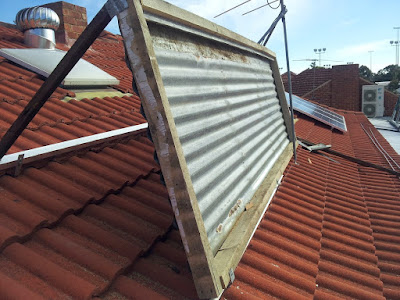Types of Roof Anchors: Which One to Choose?
Earlier, there was a very limited option available to choose the type of fall protection to be used. Manufacturers have, nevertheless, made significant advances in occupational safety technology in recent years. In fact, there is a solution to practically every problem for example roof anchors. Obviously, each roof is unique, so an anchor point that works on one may be entirely useless on another. It's great that temporary and/or transportable anchor points exist, but it's even more crucial that you use the right one. Naples Roofing is among one of the authorized roofing contractors in Buffalo NY, who provides solutions to all kinds of roofing problems while taking proper safety precautions.
There are numerous types of mobile anchor points. Some of them would function well on rooftops, while others would not. Let's take a look at three different types of roofs and the temporary anchors that could be placed on each of them.
Commercial Roofs
Commercial
Roofs are flat roofs and also featureless hence is always a challenge for the
maintenance workers who may visit for short or quick projects without fall
protection, also because worrying about the fall protection will take more time
than it will take to finish the project. However, the employer is still
responsible for their employees' safety. So, how to achieve that?
Still,
even if the roof maintenance
contractors or employer is not willing to install the permanent rail
system, they at least should think of installing a temporary or permanent roof
anchor. Some roof anchors are made to be permanently attached to steel, wood,
or concrete and left in place. Any employee who needs to access the roof can go
straight to the anchor point and attach their harness. This is a very effective
solution for buildings you own because it allows you to swiftly protect
yourself. It does necessitate roof penetration, so water intrusion must be
avoided after installation, but once in place, there is little to consider.
These anchors are available in a variety of heights and can be used in groups
to construct horizontal lifelines. The lifeline option can be quite useful on
rooftops with many places that need to be accessible.
Parapet
clamps or portable dead-weight anchor points are further solutions for
commercial roofing. The problem with these is that while they provide
protection without requiring roof penetration, they are rarely maintained in
place, necessitating far more planning and work than a permanently fixed
anchor.
Residential Roofs
Residential
Roofs have always been a problem. Either the technology was unavailable or it
was so expensive that it would have had a negative impact on property prices.
Because of this, OSHA decided not to enforce the 29 CFR 1926 Subpart M Fall
Protection rules in residential construction. This isn't the case any longer.
Residential contractors will now be held to the same standard as commercial
contractors, according to OSHA. Fall safety technology for residential
buildings is readily available and reasonably priced, thus the traditional
justifications are no longer valid. Anchors can cost as little as $14 or as
much as a couple of hundred dollars depending on extra features. Most are made
to be fastened directly to the wood frame, to the wooden roof, or to be used on
wood or tile roofs.
These are
inexpensive and simple to install - a little investment to pay for your
employees' safety.
Standing
Seam Roofs
If you're
working on a standing seam roof, the previously mentioned anchors may or may
not be of assistance, but there are items intended expressly for fall
prevention on standing seam roofs. This demonstrates what was previously
stated: there is a solution to practically every problem. Even though standing
seam roofs are sort of roof highly unique, clamp-style anchors and various
non-penetrating anchors are available. These anchors will be invaluable if you
know your organization will be operating on these roofs.
It used
to be impossible to get protection for specific scenarios like these. The key
to it all is to do your homework, plan ahead, and know what types of roofs
you'll be working on. Nothing is worse than climbing to a roof only to discover
that the type of fall protection he or she had prepared for will not work in
their current circumstance. This frequently results in the usage of no fall protection
at all.
Roof anchors are as different as the varieties of roofs, if not more so than that can be worked on. Working on a roof necessitates protection, which technology may provide. Accept no risks that endanger your or your employees' lives.





Comments
Post a Comment